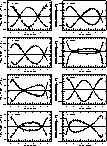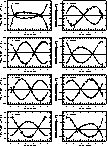Table 1 (available in electronic form only; see footnote to title page) gives our main results for the 530 single-lined stars for which reliable radial velocities could be obtained (all velocity data in km s-1).
In Table 1, Cols. 1-3 give HD numbers and J2000 coordinates, Col. 4
indicates the atmospheric parameters of the adopted synthetic template spectrum
(t followed by the temperature and g by 10 ![]() log g ), and Col. 5 the
rotational velocity of the star determined as described above.
log g ), and Col. 5 the
rotational velocity of the star determined as described above.
Columns 6 and 7 give the number of observations, n, and the time span (days) between the first and last observation.
Columns 8-13 list, respectively, the mean radial velocity and its standard
error, the standard deviation of the individual velocities, the average
uncertainty of a single observation as computed by XCSAO (see Paper I), the
ratio of observed to expected rms error, the observed ![]() and the
probability
and the
probability ![]() that it is due to the random errors of n
observations of an otherwise constant star. If the observed standard deviation
is less than predicted by XCSAO (which often happens by chance when small
numbers of observations are involved), the error of the mean velocity is given
as the latter divided by
that it is due to the random errors of n
observations of an otherwise constant star. If the observed standard deviation
is less than predicted by XCSAO (which often happens by chance when small
numbers of observations are involved), the error of the mean velocity is given
as the latter divided by ![]() . Columns 14 and 15 list, for reference, the
average values of the goodness-of-fit statistic <R> (Kurtz et al. 1992) and
the height of the correlation peak.
. Columns 14 and 15 list, for reference, the
average values of the goodness-of-fit statistic <R> (Kurtz et al. 1992) and
the height of the correlation peak.
Results for the 65 double-lined systems treated with TODCOR are given in
Table 2 (click here). The first three columns are as in Table 1, while Cols. 4 and 5 give the
parameters of the two templates (i.e. temperature and rotation;
log g = 4.0 in
all cases). Column 6 lists the mean luminosity parameter ![]() provided
by TODCOR, and Col. 7 the number of observations. The systemic velocity and its
mean error are given in Cols. 8-9, derived, in order of preference, from a full
orbital solution, from the available pairs of primary and secondary velocities
using the Wilson (1941) method (in which the systemic velocity and mass ratio
are derived from a fit of V2 vs. V1, assuming only momentum conservation),
or as a straight mean. For systems with an orbital solution or analysed by the
Wilson method, the mass ratio (q) and its mean error are given in the
following two columns. The remarks in the final column indicate double-lined
(SB2) or triple (SB3) systems with either no significant velocity variation
observed (C), analysed by the Wilson method (W), or with an orbital solution
(O). For the triple systems, only a single-lined orbit for the short-period
pair has been determined.
provided
by TODCOR, and Col. 7 the number of observations. The systemic velocity and its
mean error are given in Cols. 8-9, derived, in order of preference, from a full
orbital solution, from the available pairs of primary and secondary velocities
using the Wilson (1941) method (in which the systemic velocity and mass ratio
are derived from a fit of V2 vs. V1, assuming only momentum conservation),
or as a straight mean. For systems with an orbital solution or analysed by the
Wilson method, the mass ratio (q) and its mean error are given in the
following two columns. The remarks in the final column indicate double-lined
(SB2) or triple (SB3) systems with either no significant velocity variation
observed (C), analysed by the Wilson method (W), or with an orbital solution
(O). For the triple systems, only a single-lined orbit for the short-period
pair has been determined.
HD | P | T | V0 | K1 | K2 | e | | | |||
| [d] | [HJD-2 440 000] | [km s-1] | [km s-1] | [km s-1] | [ | [km s-1] | |||||
| 005843 | 9.17607 | 7868.883 | -5.64 | 73.00 | 79.26 | 0.005 | 185.2 | 1.18 | |||
| 0.00016 | 1.792 | 0.24 | 0.33 | 1.35 | 0.004 | 70.4 | 4.96 | ||||
| 022054 | 10.41302 | 7478.887 | 17.44 | 71.17 | 77.90 | 0.129 | 130.6 | 5.89 | |||
| 0.00038 | 0.146 | 0.89 | 2.40 | 0.78 | 0.010 | 4.3 | 0.91 | ||||
| 024623 | 19.66227 | 7861.470 | 9.47 | 63.92 | 65.08 | 0.491 | 130.0 | 0.53 | |||
| 0.00037 | 0.014 | 0.09 | 0.19 | 0.22 | 0.002 | 0.3 | 0.64 | ||||
| 037603B | 27.76205 | 7886.104 | 20.62 | 20.43 | 21.79 | 0.405 | 349.6 | 2.71 | |||
| 0.00621 | 0.226 | 0.38 | 0.88 | 0.66 | 0.024 | 4.1 | 1.95 | ||||
| 039166 | 15.86860 | 7568.472 | 9.01 | 61.97 | 62.16 | 0.232 | 304.3 | 0.75 | |||
| 0.00037 | 0.034 | 0.12 | 0.26 | 0.27 | 0.003 | 0.8 | 0.80 | ||||
| 054901 | 41.00333 | 7709.088 | -9.86 | 44.46 | 58.45 | 0.638 | 349.3 | 0.72 | |||
| 0.00125 | 0.024 | 0.15 | 0.26 | 0.72 | 0.004 | 0.5 | 2.36 | ||||
| 074425 | 1.585232 | 7797.961 | 16.88 | 101.93 | 118.97 | 0.011 | 184.0 | 1.77 | |||
| 0.000008 | 0.100 | 0.35 | 0.64 | 0.79 | 0.005 | 22.6 | 2.19 | ||||
| 075638 | 5.81667 | 7558.279 | 11.05 | 28.92 | 0.083 | 322.0 | 2.96 | ||||
| 0.00086 | 0.452 | 0.91 | 1.20 | 0.056 | 28.2 | ||||||
| 087810 | 12.94724 | 7442.274 | -0.24 | 55.50 | 55.68 | 0.439 | 48.6 | 0.47 | |||
| 0.00012 | 0.008 | 0.07 | 0.17 | 0.18 | 0.002 | 0.3 | 0.49 | ||||
| 088162 | 24.74771 | 7764.323 | -27.67 | 23.85 | 25.05 | 0.603 | 17.4 | 0.78 | |||
| 0.00310 | 0.038 | 0.15 | 0.32 | 0.44 | 0.009 | 0.93 | 1.10 | ||||
| 121648 | 4.99167 | 7750.057 | -29.50 | 89.85 | 92.02 | 0.007 | 219.4 | 1.86 | |||
| 0.00003 | 0.512 | 0.27 | 0.56 | 0.72 | 0.004 | 36.9 | 2.39 | ||||
| 134193 | 5.76930 | 7572.411 | 4.77 | 77.40 | 87.61 | 0.004 | 73.7 | 1.14 | |||
| 0.00006 | 0.930 | 0.22 | 0.50 | 0.48 | 0.005 | 57.9 | 1.07 | ||||
| 147428 | 75.55870 | 7784.165 | -19.66 | 27.28 | 38.46 | 0.089 | 186.7 | 0.70 | |||
| 0.02198 | 1.059 | 0.18 | 0.25 | 0.83 | 0.014 | 5.3 | 2.71 | ||||
| 156458 | 17.11603 | 7990.970 | -30.65 | 60.58 | 63.07 | 0.161 | 279.1 | 0.54 | |||
| 0.00030 | 0.078 | 0.18 | 0.24 | 3.06 | 0.004 | 1.7 | 8.74 | ||||
| 159172 | 13.87687 | 7674.910 | 2.60 | 54.89 | 66.78 | 0.218 | 204.1 | 3.61 | |||
| 0.00033 | 0.055 | 0.58 | 1.49 | 0.37 | 0.010 | 1.8 | 0.75 | ||||
| 171275 | 15.40365 | 7839.525 | -30.87 | 58.78 | 71.37 | 0.083 | 305.4 | 0.91 | |||
| 0.00058 | 0.116 | 0.18 | 0.23 | 0.73 | 0.005 | 2.9 | 2.91 | ||||
| 177005 | 11.10549 | 7943.389 | 2.79 | 53.24 | 72.04 | 0.333 | 143.3 | 2.86 | |||
| 0.00063 | 0.078 | 0.49 | 1.52 | 1.53 | 0.011 | 2.6 | 1.93 | ||||
| 198226 | 1.49941 | 7773.106 | -16.03 | 90.51 | 0.021 | 93.7 | 10.1 | ||||
| 0.00004 | 0.421 | 2.25 | 3.27 | 0.034 | 101.3 | ||||||
| 203031 | 48.73828 | 7760.086 | 6.43 | 27.49 | 40.59 | 0.493 | 159.0 | 1.29 | |||
| 0.00442 | 0.080 | 0.19 | 0.53 | 0.55 | 0.009 | 1.0 | 1.11 | ||||
| 222995 | 85.83454 | 7819.892 | -20.28 | 31.73 | 41.20 | 0.335 | 175.0 | 2.17 | |||
| 0.02771 | 0.392 | 0.25 | 0.86 | 0.51 | 0.008 | 1.8 | 1.18 | ||||
|
|
| HD | HD | HD | HD | HD |
| 4086 | 27832 | 81725 | 125488 | 181656 |
| 4856 | 30315 | 84667 | 127457 | 182246 |
| 6696 | 36844 | 88829 | 130353 | 190004 |
| 7138 | 38610 | 89866 | 130667 | 196386 |
| 8302 | 38753 | 91728 | 131160 | 198028 |
| 8607 | 42313BC | 94206 | 131721 | 198047 |
| 11284 | 46318 | 99946 | 135282 | 198346 |
| 13179 | 51832 | 103846 | 141652 | 203405 |
| 16453 | 54269 | 104622 | 142124 | 212048 |
| 17613A | 63795 | 110220 | 145873 | 213619 |
| 18570 | 72984 | 110456 | 150340A | 217855 |
| 19759 | 74781 | 111005 | 166600 | 218010 |
| 23290 | 77214 | 118703 | 168066 | 219712 |
| 26757 | 79725 | 119603 | 179280 | |
| 27743 | 80678 | 121136 | 180005 | |
|
|
The elements of the 18 double-lined and 2 single-lined spectroscopic orbits derived here are given in Table 3 (click here), and the orbits are shown in Fig. 2 (click here). The 73 stars rotating more rapidly than 120 km s-1 and for which no velocities could be obtained are listed in Table 4 (click here) (HD numbers only).
Finally, the individual radial-velocity observations for single-lined and double-lined stars are listed in Tables 5 and 6, respectively (provided in electronic form only).



Figure 2: Spectroscopic orbits and observed radial velocities for 20 binary systems.
The orbital elements are given in Table 3 (click here)